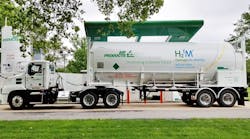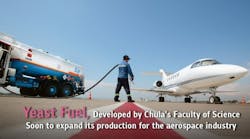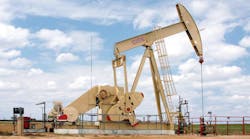ALTHOUGH the commodities market could be considered to be “boring”—oil and natural gas have been trading in the same area for an extended period of time—there are a lot of opportunities for those in the supply chain, according to Jeffrey Currie of Goldman Sachs & Co, the featured speaker during the June 3 luncheon at the International Liquid Terminals Association’s 2013 International Operating Conference in Houston, Texas.
“In the last decade, we’ve had significant supply constraints,” Currie said during his presentation entitled “The Global Impact of US Oil Shale Development.” “This drove volatility in prices in benchmarks, whether it was crude oil, copper, or natural gas. However, those high prices created a supply response, which is part of why those markets are boring. But there are still bottlenecks. They’ve just moved downstream to the manufacturing process. There is volatility in there.
“We’ve seen a significant shift in the overall economic environment. Driving that is a more optimistic look in the economy. You can see this by looking at two of the biggest trends that have changed in the commodity complex with gold and natural gas trading value for growth. The fact that the trends reversed really underscores the profound shift we’re seeing in the United States.
“You look at gold. There was a hedge against the debasing activities of central banks, not only in the United States but around the world. Why is gold selling off? There is a flicker that the Federal Reserve is going to start to exit the expansionary policies they have had in place for the past five years. Why? Underlying macroeconomic data.”
He said natural gas is fueling that optimism, with the shale revolution being a bright outlook and showing we’re debottlenecking the system.
Technology renaissance
Currie said we’re experiencing a technology renaissance, not an end to technology.
“A lot of people like to argue the super-cycle has ended in commodities,” he said. “I don’t like term end. A cycle, by definition, suggests movement to another phase. We’re developing a new phase. What do you do with this new, abundant source of energy? I like to think about it as a manufacturing renaissance.”
Currie said that it’s always been argued that the core story in commodities, when analyzed on a long-term basis, has to be supply-driven and not demand-driven.
“Why is it not demand-driven?” he said. “I like to argue that demographic stories that focus on China and India are dismal Malthusian logic. It didn’t work then and won’t work now. The reason is that demand creates the high-frequency cyclical boosts we see in this market. Demand drives these markets on a one- to two-year horizon. Supply drives them on a two- to 10-year horizon. The reason is that you make an investment today that gives you supply four to five years down the road. You’re stuck with that supply and can’t get out.
“Supply actually restricts demand on a longer term. Another way to make the point: Paradoxically, you want to be bullish to commodities with weak demand growth rates and bearish to commodities with very high growth rates. Examples: Crude oil and copper were the most bullish of all commodities over the last decade. They had trend demand growth rates of 1.5% to 2.5%. GDP has trend growth in excess of 4%. They couldn’t keep up with GDP because they were supply-constrained. Aluminium has trend demand growth rates of 7%. That market has been in surplus for seven years. Why? Because it’s super-easy to produce. It comes from bauxite, which is the fourth-most plentiful resource on earth.
“Natural gas makes this point crystal-clear. What was the trend for US natural-gas demand over the last decade when prices were extremely volatile? A doughnut. It couldn’t grow. What do you think the demand growth rate is in the US today? 5%. Why? Because the shale revolution has debottlenecked that supply source.”
Supply core
The core of the structural commodity story was always one of supply, not demand, and consumers have solved the problem on their own, he said. The US drives growth in energy supply, while China drives growth in metals supply (copper, zinc, nickel, and aluminum).
Currie said there are three key reasons why people point to the end of the super-cycle:
• Substantial increases in supply.
• The sun has set on emerging market demand growth, and China is done.
• When you look at company returns that produce these commodities, they’ve been abysmal.
“We buy into the view that supplies have increased, but not that the sun has set on emerging demand growth,” he said. “Plastics demand out of China is important in driving what’s happening in the liquids and gold markets. We also agree there are problems in company returns.
“When you look at Chinese demand for iron ore, if I told you it was going to grow 20% year-over-year, you would go out and invest enough to grow supply at 20% year-over-year. And that’s exactly what these companies did, which was why there was so much excess capacity. You go out and spend a lot and get no supply increase, and you have supply problems. That’s why we focus on the supply side as being critical.”
Largest consumers
He said the problem is that the two largest consumers—the US and China—are the ones growing the supply.
“Where are Chile, Peru, Venezuela, Nigeria, Algeria, Iraq, Iran, Russia?” he said. “They’re missing. Why? We just had the largest commodities rally the world has ever seen, and these producers could not increase supply? Supply constraints came in two forms: one was geological, given the current technology. That’s like natural gas. We knew the stuff was down there—we just didn’t know how to get it. The second was political, given current policy. Environmental policy is preventing drilling off the coast. We know the oil is there. We just can’t get it. Or in Venezuela, they kicked operators out. Saudi Arabia doesn’t allow foreign investors. The policies really did restrict investment over the past 10 years.”
He said that in commodities, they have a rule by which they live: “Do not bet against engineers. Give them enough time and money and they will solve a problem.”
“You can either move technology or move the policy,” he said. “The corollary is, ‘Do not bet on a politician. Give them enough time and money and they make a mess.’
“How has technology evolved? Natural gas was the first thing we saw coming out of ground. Why? Molecular structure. Propane and ethanes were in the center and then we finally get to crude. Technologies got better and better. They just targeted the molecular structure. The less dense and low-carbon fuels were the first to be found and as the technologies evolved, producers went after more dense fuels. This has now generated an equilibrium across the energy sector. How boring is the outlook for oil? One hundred dollars a barrel. It may be boring to a commodities investor, but it is a great thing for economic growth.”
Returns normalize as markets find a new equilibrium, he said. Poor returns in the 1990s caused capital to be redirected into the new economy. The return of the old economy creates a rise in returns, which attracts capital back to the sector. But policy constraints put a cap on further increases and on the ability to attract capital, regardless of price. Returns normalize as technology revolutions and supply responses create the old economy renaissance.
“We have a supply-driven equilibrium,” he said. “So what does this mean for the outlook for economic growth now that we have the supply? We’ve hit the wall. We’ve breached the ability to consume this stuff. It’s too much of a good thing. First in gas, then liquids and ethane. Will it happen in crude? Eventually, in 2014, you have to be worried that crude will follow the same path.”
Consumption capacity
The revolution has breached consumption capacity. Why will shale only improve the trade balance by 1.2% of GDP by 2017, simply improving the dollar by 5% to 10%? How can it be so small?
“The reason is that we hit constraints on the ability to consume natural gas and oil,” he said. “Your standard macroeconomic model has two inputs: capital and labor. You have to get to the point where capital is actually invested in the US.
“Natural gas volatility has declined with shale, and moved downstream where bottlenecks still remain. Natural gas prices spiked at the beginning of the decade. Stronger US domestic natural gas production has not brought power prices down, although the industrial sector suffered least, in power—there was a sharp increase in power prices paid by residential end users, whereas industrial end users are relatively better off—and in natural gas, but the declines are nothing like the declines seen at the well head.”
Currie said international competitiveness is just beginning. Nonetheless, in Europe, energy-intensive industries face increasing costs, especially in the petrochemical industry depending on lighter feedstocks. The comparative advantage of US petrochems over their European competitors is starting to accelerate, and the gap in industrial power prices has been closing.
The US and Mexico are gaining on China in manufacturing, he said.
“This is a very important point,” he said. “What was the magic of the economic miracle in China over the last decade? Cheap energy and cheap labor. They had lots of coal. Can they do any of those three anymore more? No. In the global picture, China is not as big of a monster, because basically it was taking more activity from the rest of world in 2000-2012.”
He said the US is broadly capacity-constrained, but the ability to absorb abundant natural gas domestically pushes against its limits because generation demand is crowding out coal consumption. Even in the petrochemical industry, despite a growing competitive advantage over European competitors, there are significant constraints downstream.
That is depressing prices of lighter products such as propane and ethane and pushing the excess US natural gas across the borders into Canada and Mexico.
“The last decade was one for supply constraints driven by policy uncertainty and technological uncertainty,” he said. “We’re moving into a demand-constrained world.”
Demand outlook
Policy uncertainty underlies the future demand outlook:
• Power plant emission regulation.“More immediately, CSAPR was planned for 2012, but got stayed and eventually scrapped. MACT is all set for implementation in 2015-2016, and looks more certain.”
• Industrial policy.“As capital and labor are key to developing a strong economic response to the shale revolution, policy aimed at stimulating both can create significant demand three to five years out. This debate is non-partisan.”
• LNG exports.“The DOE approval process is likely to restart in 2013 after the release in late 2012 of an impact study in favor of large-scale LNG exports. However, the political debate around energy security and energy independence is likely to intensify further as the 2015 start-up date approaches.”
• Vehicle demand.“The potential for additional policy incentives to ramp up the use of natural gas in the transportation sector makes vehicle demand a wild card for any demand projection more than five years out.”
He said new environmental regulation and relative fuel prices could drive 60 gigawatts of coal-fired power plant retirements in 2013-18. Sixty gigawatts of retired coal plants could be replaced by the gas-fired generation equivalent to 4-6 Bcf/d of demand.
He said North American projects are relatively well-positioned from a cost perspective compared to global competitors (cheap resource, infrastructure).
“Ultimately, we expect four US terminals (Brownfield, contracts, USGC/East Coast) and three Canadian terminals up and running by 2020,” he said. “We see the potential for 21 Bcf/d of additional demand for US natural gas from 2013-2020. Shale technology is driving a resurgence in US oil and gas production, creating a competitive advantage.
“The future for shale lies with China. US net petroleum imports have fallen by 40% as Chinese imports surge, changing the global geopolitics/macro. I always like to ask the question: Who is the largest commodities producer in the world? China. Pretty much everything but crude, copper, cotton, soybeans. It’s a very small list of commodities. They have a policy going back to the Ming Dynasty of being self-sufficient in commodities. It underscores the importance of energy resources. They are buying companies left, right, and center in the US. They’re already self-sufficient in metals like they’re self-sufficient in energy.”
Countries one to three years away from production: Australia, Mexico, and Saudi Arabia. Countries three to five years away: Argentina, China, and Poland.
“It truly is a renaissance,” he said. “We can’t expect to see it today. We’ve got to build that infrastructure. It will happen. We will get there. But it is three, four, five years out.” ♦










